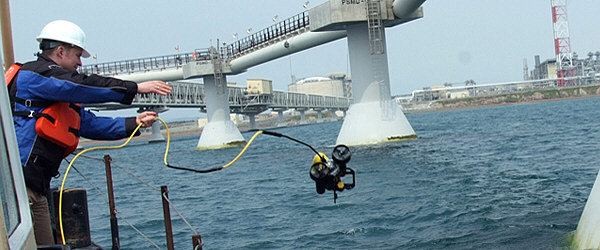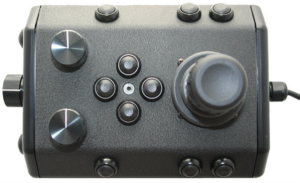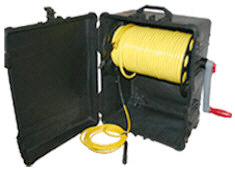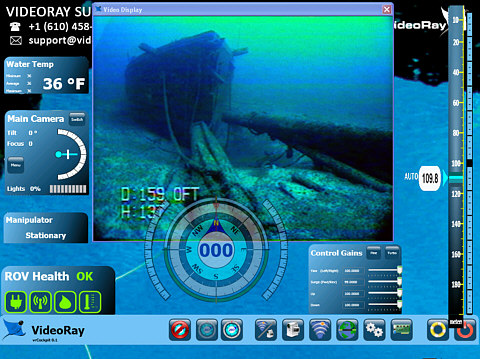Diagnostics and Repair - VideoUnderstanding the video circuit can help in diagnosing and solving video problems. Typical video problems include complete loss of video, video noise, image quality (focus, color, inverted image) and video frame rate (stutter). OverviewComposite video (in NTSC or PAL format depending upon country standards) originates in the primary, or external, camera and passes through a switching circuit in the ROV. The switching circuit determines which camera source signal is displayed, and is controlled by VideoRay Cockpit software on the topside. From the ROV, the video is passed via the tether to the control panel. Within the control panel the video is either passed through a Lyyn visual enhancement system, if one is installed, or directly to a video splitter. The video splitter provides video feeds to both a digital and analog display circuits. Digital CircuitThe digital circuit includes a USB video capture device, which is connected to a USB hub within the control panel and then to a computer via a USB cable. Within the computer, VideoRay Cockpit software can display the video, in real time with or without video overlay text or graphics. If a second monitor is attached to the computer, the video window can be displayed on either or both display devices. VideoRay Cockpit software can also record the video to disk. Other software can also use the digital video source, and this can be helpful for diagnostic purposes. Analog CircuitThe analog circuit passes from the splitter directly to a Video Out RCA style connector on the rear of the control panel. From this connection, a cable can be connected to a monitor or video recording device. If the video is split at this point to two or more devices, a video amplifier/splitter is recommended. Splitting the video without an active amplifier is likely to result in poor video quality. Note: Video overlay text and graphics are supported on the digital circuit, but not the analog circuit. Summary of Video Circuit Components
When diagnosing video problems, the divide and conquer method is recommended. See the other FAQs about video problems for more specific instructions. Video problems are widely variable. It could be a faulty cable, signal problem, video noise, improper camera setting for the conditions, or even lighting. If there is no video signal, first verify that rest of the system is functional. If the rest of the system is functional, verify that the video circuit in the control panel is recognized by the computer. The video circuit can be verified by checking the Sound, video and game controllers section in Device Manager. To access device manager, open the Windows Control Panel, and in the Classic View, click on System. Next, click on the Hardware tab, and then the Device Manager button. Click on the plus sign (+) next to Sound, video and game controllers and confirm that the DVD Maker 2 device is listed. If the DVD Maker 2 device is not listed, unplug the USB cable, wait a few seconds and plug it back in. If the DVD Maker 2 is still not listed, power down the control panel and reboot the computer. If the DVD Maker 2 is not listed after a shut down, restart and reboot, a problem with the USB cable, DVD Maker 2 device, or internal USB hub or controller is possible. If video noise seems to be a problem, it could be local interference, a mismatched ground, or a poor connection somewhere in the system. If you are operating off a local power source such as a generator, make sure the ground is the same as the water in which the ROV is being used. Also, check that each connection in the tether is clean and well seated. If you do not have video on the second monitor, make sure the monitor is powered on, the cable connected and computer configured to display on two screens. If the video image is poor, check the camera focus and the camera settings. You may also need to adjust the lights. |
|
Unequal Grounds
|










